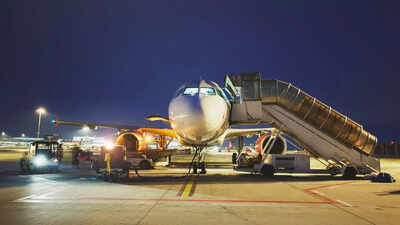ARTICLE AD BOX

Ever wondered why late-night flights often cost less than daytime ones? It all comes down to traveller behaviour and demand. According to a study by the International Air Transport Association (IATA), fewer people choose to fly at night because of tiredness, sleep disruption, and limited airport transport options.
With less competition for seats, airlines reduce fares to fill planes.
Simply put, while the world sleeps, flight prices drop too.
How airlines save money with night flights
Airlines schedule night flights strategically to keep their planes operating for longer hours. During the night, airports are less crowded, which means fewer delays and smoother turnarounds. This efficiency helps airlines cut operating costs and use their fleet more effectively.
To attract more passengers during these quieter hours, airlines also offer lower ticket prices, creating a cycle of savings for both sides.
Passenger demand affects night flight prices

Passenger preference plays a major role in why night flights are cheaper. Most travellers prefer to fly during the day for comfort, convenience, and better connections. Because red-eye flights are less popular, airlines drop prices to fill seats.
Lower airport fees keep night flights cheaper
Many airports charge reduced landing and parking fees for flights that operate at night.
This encourages airlines to use less busy hours and distribute traffic more evenly throughout the day. These lower airport charges reduce overall operational expenses, which airlines often pass on to passengers in the form of cheaper tickets.
Comfort issues make night flights less in demand

Flying at night comes with its downsides, which also explains the price gap. Passengers often deal with fatigue, limited in-flight meals, and restricted public transport options after landing.
Jet lag can also be worse after overnight travel, especially on longer routes. Because these flights are less comfortable, they attract fewer travellers, keeping prices lower.
Pricing algorithms make night flights more affordable
Airlines rely on smart pricing algorithms that track booking trends in real time. When a flight has many unsold seats, prices automatically drop to attract buyers. Since red-eye flights tend to sell slower, these algorithms keep reducing fares until enough passengers book.
This pricing system ensures night flights remain the cheaper option.
The takeaway on why night flights are cheaper
Night flights cost less mainly because demand is low, operating costs are lower, and airports charge less during off-peak hours. For airlines, they’re a smart way to keep planes flying longer. For passengers, they’re a great way to save money, as long as you can handle a little lost sleep.Also read|Seat snatched on Indian Railways? How to reclaim your reserved seat without a fight

 6 hours ago
3
6 hours ago
3









 English (US) ·
English (US) ·